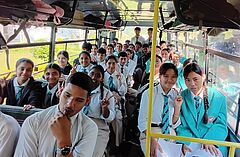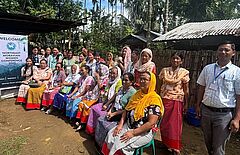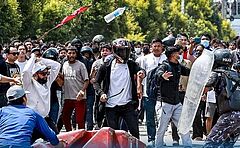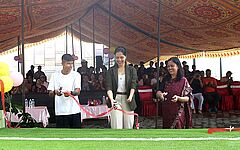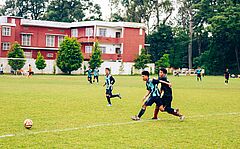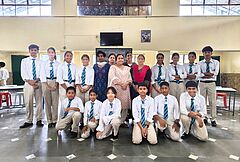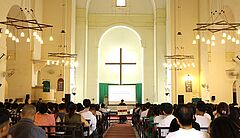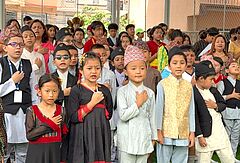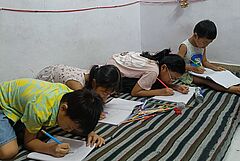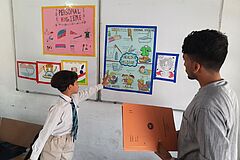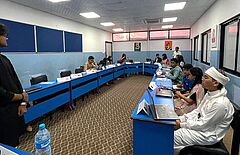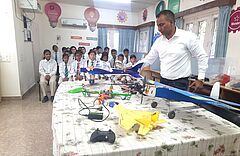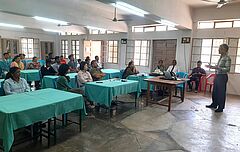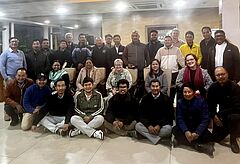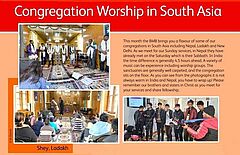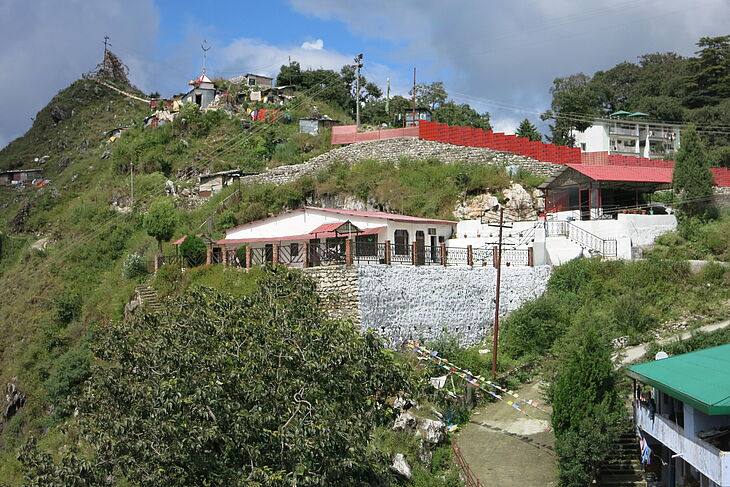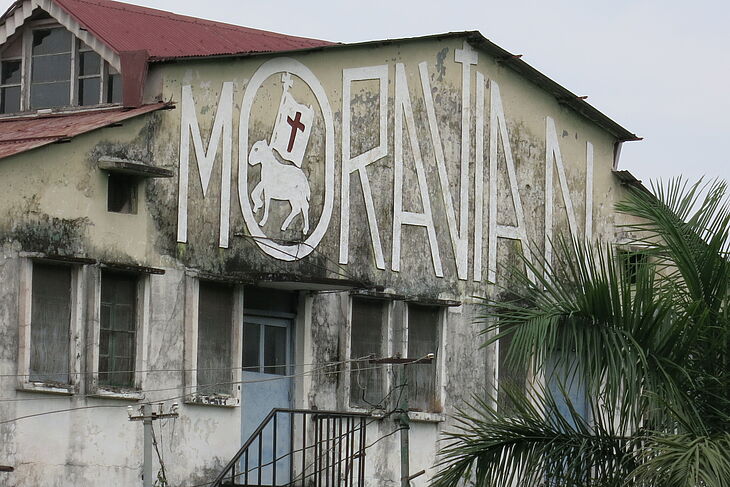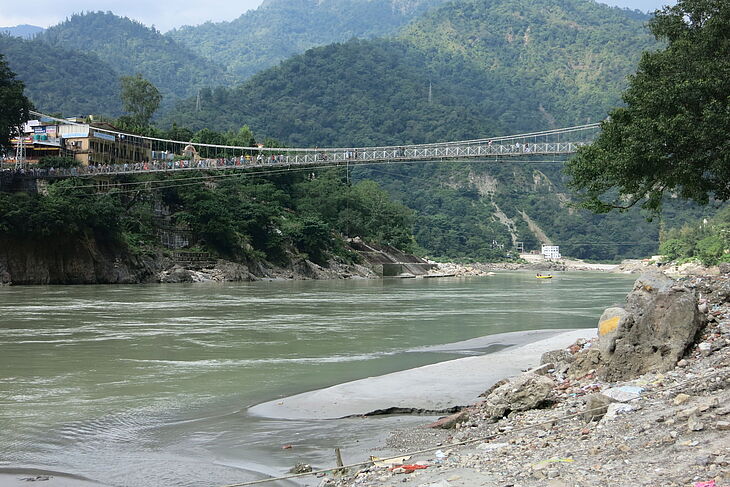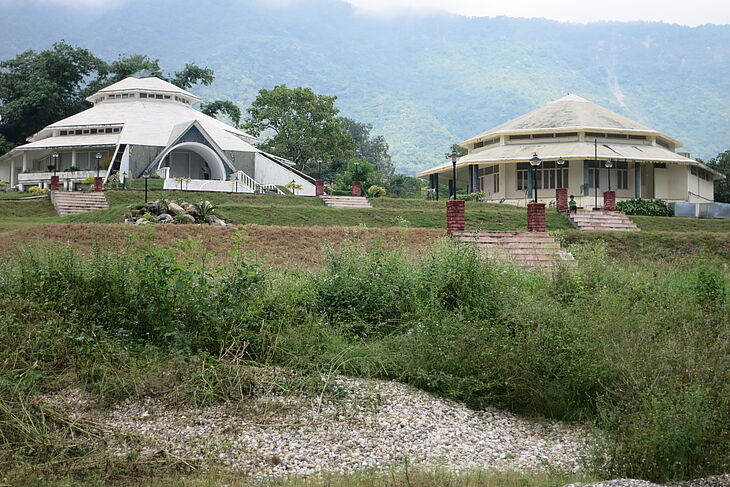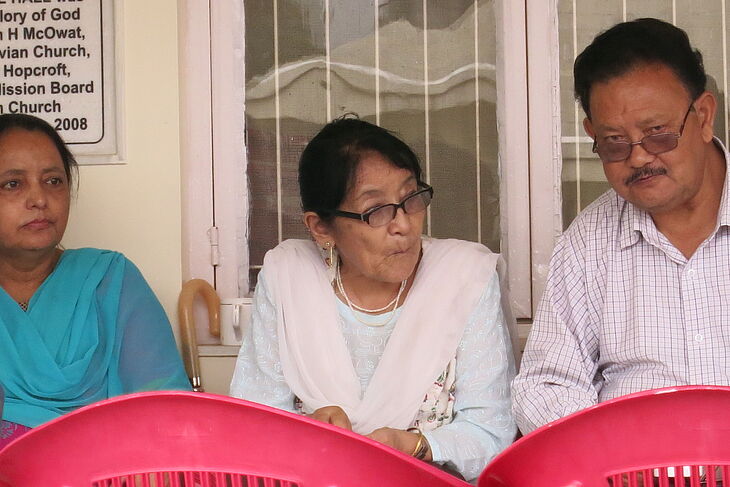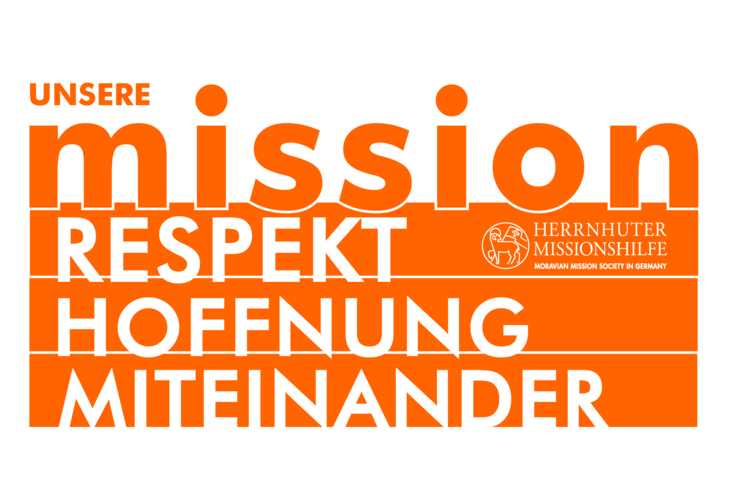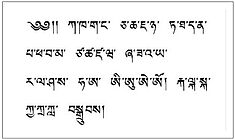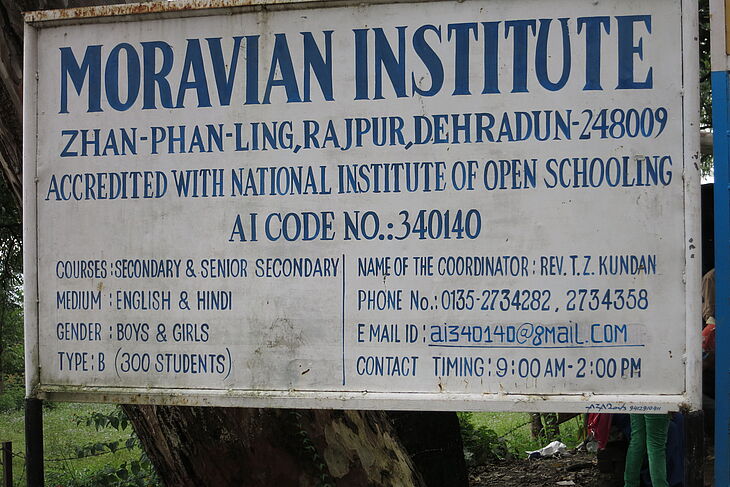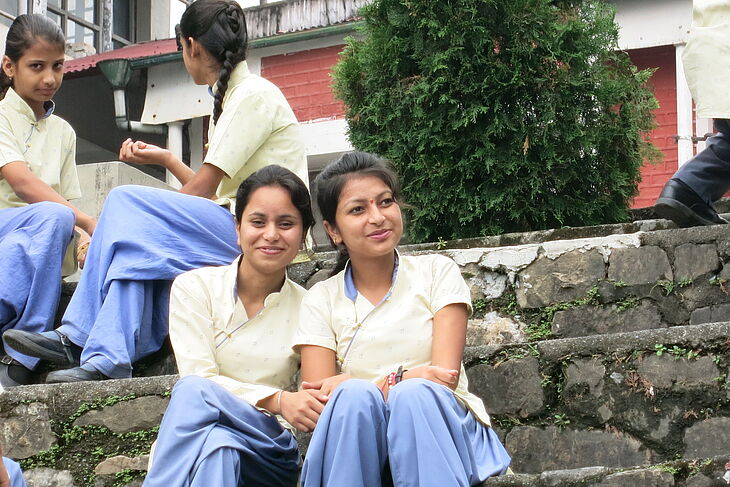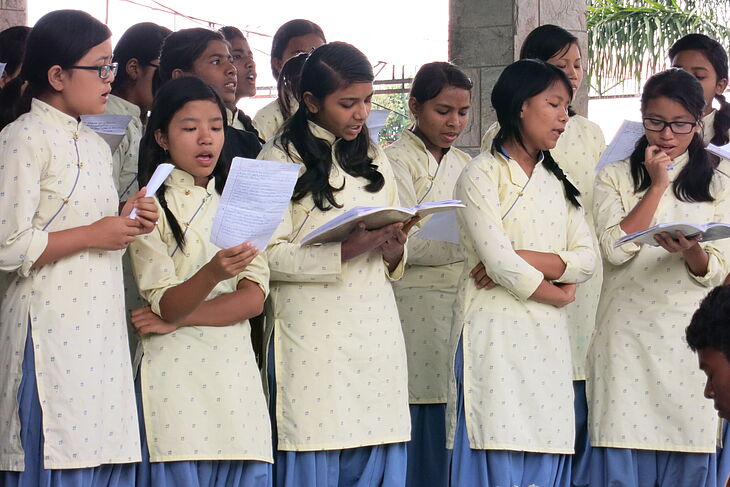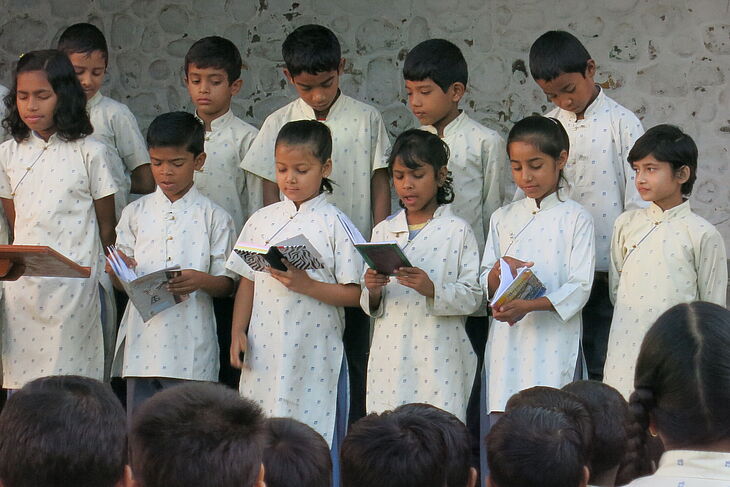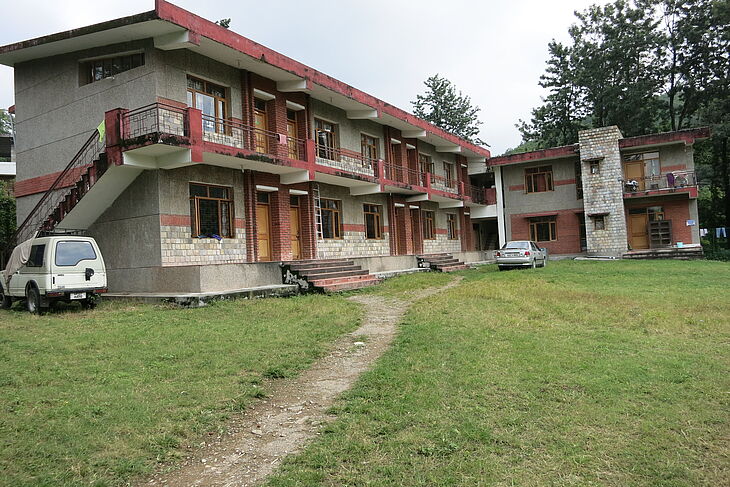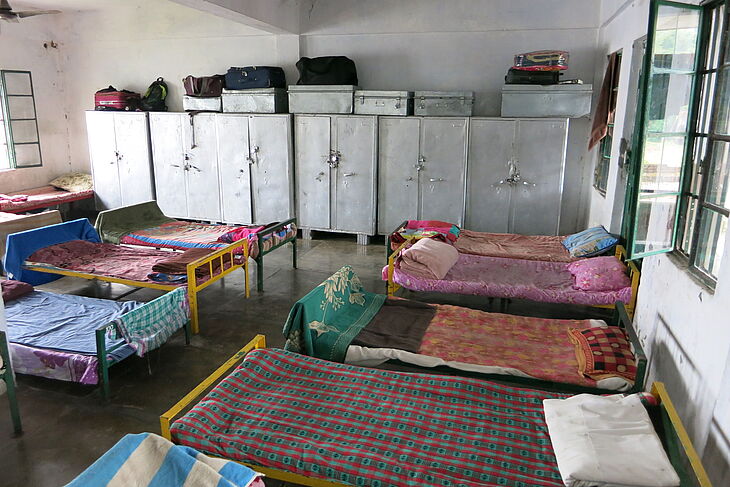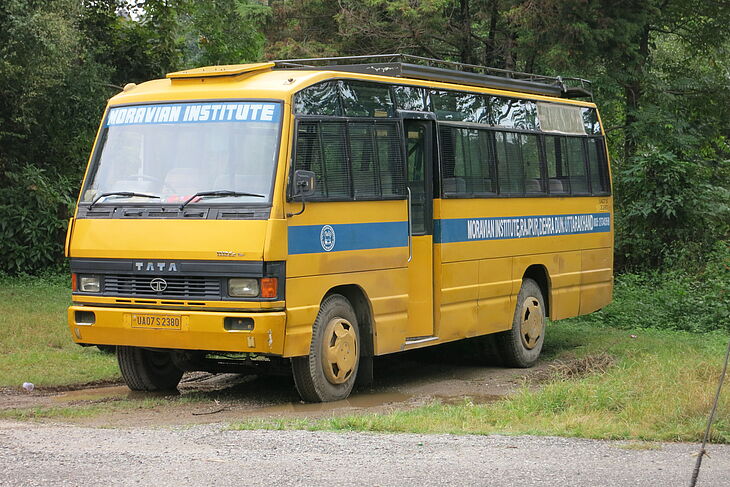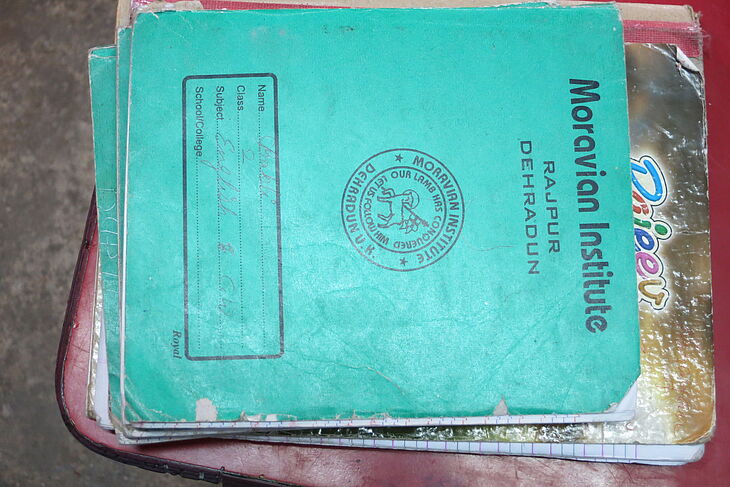South Asia

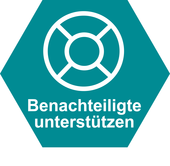
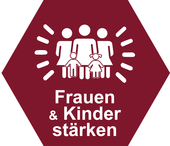

India is located in South Asia and occupies the largest part of the Indian subcontinent. Highlands and mountains separate this area from the rest of the continent. With an area of 3,287,490 square kilometers, India is the seventh largest country in the world and nine times the size of Germany.
The highest mountain in India is Kangchendzönga (Kangchenjunga in English), the third highest mountain in the world. The border with Nepal runs across its summit.
India's natural border to the north is formed by the Himalayas. Part of the country is surrounded by the Indian Ocean. India borders Pakistan to the northwest, with which it formed a single entity some time ago. There are further borders with Tibet, Nepal, Bhutan, Myanmar and Bangladesh.
Off the southern coast of India lie Sri Lanka and the Maldives in the Indian Ocean.
India is a federal republic with 28 federal states. There are more than 30 major cities in India, in which more than one million people live. Most Indians live in rural areas. Out of every 100 Indians, 67 live in the countryside and only 33 in the city. India is a country of contrasts where there are great differences.
News from the projects
Four classes from the Moravian Institute on an educational trip
On Friday, October 17, 2025, students in grades 9 through 12 from the Moravian Institute in Rajpur took an educational trip to Prem Nagar, a district of Dehradun (population approx. 710,000) with a “Science City.” This city grew out of an Indian military academy founded in 1932. In a science park, the four classes enjoyed an exciting and entertaining day with practical examples and applications of the natural sciences. This allowed the students to combine their knowledge from class with practical experience. Many pictures here. Founded in 1963, the Moravian boarding school is located in the small, mountainous northern Indian state of Uttarakhand, which has more than ten million inhabitants (83 percent Hindu; 14 percent Muslim; only 0.4 percent Christian; urbanization rate 30 percent). About 80 percent of the rapidly growing population can read and write.
From the 40th Sisters' Conference in Latingkhal
In the vast Republic of India, the Moravian Church has spread to the far eastern state of Assam through contacts with the Moravian Institute boarding school in Rajpur in the northwestern state of Uttarakhand 41 years ago. There are now several Moravian congregations and institutions there. From October 10 to 13, 2025, the sisters gathered in Latingkhal for the 40th Northeast Moravian Women's Conference. A total of 28 sisters devoted themselves to exchange, Bible study, worship, and thematic work. Their motto was: “Serving God with devotion, perseverance, and grace.” The oldest congregation in Assam is the congregation in Binnakandi. It is also home to the largest church of the Moravian Church. Seven pictures here. The Moravian Church in Assam is part of the South Asia Mission Province of the worldwide Moravian Church.
Church information on the unrest in Nepal by Shanti Kumar Pradhan
The Generation Z movement led by young people overthrew the Nepalese government on September 13, 2025. Several parliamentary buildings in Kathmandu burned down during violent demonstrations; private and government residences throughout the country were also destroyed. There were at least 22 deaths. Parliament was dissolved by the president; new elections were scheduled for March 2026. Due to the very turbulent situation, Rev. Shanti Kumar Pradhan, the leader of the Moravian Church in Nepal, wrote updates on September 9 and 12, 2025. See the attachment here.Update 1 states: “Violence and vandalism are spreading like wildfire. The police are overwhelmed. Political leaders have fled abroad, and hundreds of prisoners have broken out of jail. By God's grace, all members of the Moravian Church are safe. Schools are closed. Only online classes are available. Please pray for us.”
Start of school at the Shristi Academy in Kathmandu
A few days before serious unrest broke out in Kathmandu, the capital of Nepal, leaving 19 people dead because the government had blocked various social media platforms, the start of the 2025 school year was celebrated at the Moravian Church's International Kindergarten & Shristi Academy in Kathmandu-Baneshwor. On September 3, 2025, in the middle of the first week of school, the first graders set off for the Dirty Duck children's park, where they could immerse themselves in nature and get to know various domestic animals, which was met with great enthusiasm by the little ones. 20 pictures here. For children from the city of Kathmandu, with its two million inhabitants, contact with domestic animals is something quite special. The school also posted numerous pictures on Facebook of the recent inauguration of the futsal court and the opening of the taekwondo and futsal academy with prominent athletes. See here and here.
Soccer players from the Moravian Institute win tournament
The Moravian Institute, a renowned boarding school run by the Moravian Church for boys and girls in Rajpur near Dehradun in northern India, recently posted on Facebook: "Our school continues to dominate in soccer! Our older boys played their last game on August 28, 2025, against Cambrian Hall School in Dehradun (population 700,000) at the 25th Colonel Shashi Shamsher Invitational Football Tournament, organized by Cambrian Hall School. In an exciting game that was ultimately decided in extra time, Samyi Rongmei scored the decisive goal at the last moment, securing victory for us. Jaujianlong Gengmei was subsequently named the best defender of the tournament. Congratulations to our boys, the coach, and all the staff on winning the tournament! 20 pictures from the final here. 20 pictures from the award ceremony here.
Who recites the best? Who argues the best?
Once again, students at the Moravian Institute in Rajpur near Dehradun, northern India, practiced their recitation and rhetorical skills. Competitions between the mixed-class houses on campus are a tradition at the boarding school. First, there was a cross-house Hindi debate in grades 9 to 12 and a Hindi poetry recitation in grades 1 to 8. The residents of the houses demonstrated their skills and presented well-thought-out arguments and counterarguments on given topics. The Phuntsog house won, the Tharchin house came second, and the Gergan house came third. This was followed a little later by an English debate competition. Here, the Phuntsog house won again, ahead of the Gergan house and the Tharchin house. Competitions like these boost the students' self-confidence. Pictures here and here.
Three-hour ecumenical service in Delhi
Ecumenical cooperation among churches in northern India is becoming increasingly important and intensive. The Moravian Church in the country welcomes this process and is participating in it. The Delhi Moravian Fellowship invited people to attend a large ecumenical service on Sunday, September 14, 2025, at 2 p.m. at St. Martin's Roman Catholic Church in Delhi. This service was prepared and conducted by the Ecumenical Koinonia Churches Forum Delhi. Pictures here and here. A Facebook post by the Moravian Church states: "Believers from different churches across the Delhi region came together in a spirit of unity and fellowship to pray, celebrate, and strengthen each other's faith. The event was marked by inspiring worship, powerful sermons, and warm fellowship. It reflected the true essence of koinonia."
First district conference of the Moravian Church in Nepal
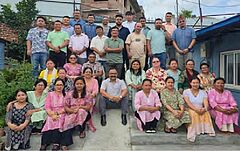
Thirty-seven sisters and brothers (including 21 with voting rights) recently gathered at the Khokona Moravian Church in Kathmandu for the first district conference of the Moravian Church in Nepal, which is part of the South Asia Mission Province founded in 2023. The theme of the conference was ‘The New Being.’ The August 2025 issue of the Moravian Messenger published a short report. See here (page 88). The meetings were chaired by Nirmal Dangol (chairman) and Joshua V. Pradhan (vice-chairman) from 11 a.m. to 6.15 p.m. The seven-member District Executive Committee, elected for the first time, is composed as follows: District Executive Committee: 1. Br. Kancha P. Dangol (Chair), 2. Sr. Kamaleswori Pradhan (Vice Chair), 3. Sr. Lydia Shah (Secretary), 4. Sr. Sunita S. Tamang (Deputy Secretary), 5. Br. Simon Shah (Treasurer), 6. Br. Nirmal Dangol (Deputy Treasurer) 7. Br. Rajan Maharjan (Member). Jane Carter, Director of the British Mission Board, sent greetings from Europe in a pre-recorded video.
Shristi Academy honored poet Bhanu Bhakta Acharya
On July 13, 2025, children, young people, and teachers from the International Kindergarten & Shristi Academy of the Moravian Church in Kathmandu, Nepal, took part in the celebrations for the national holiday Bhanu Jayanti, which is celebrated every year on the 29th day of the Nepalese month of Ashadha. This day is dedicated to the outstanding Nepalese poet Bhanu Bhakta Acharya (1814-1886), who researched the Hindi epic Valmiki Rāmāyaṇam and translated it from Sanskrit into the vernacular Nepali. Without his achievements, the Nepalese language would not exist. The school's Facebook page stated: “Bhanu Bhakta Acharya's efforts have greatly enriched our communication and brought us closer together as a people. Let us continue to cherish and promote our rich linguistic heritage!” Some photos can be found here. The poet is nicknamed Adikavi, which means “the first poet ever.”
Greetings from the Delhi Moravian Fellowship
The Delhi Moravian Fellowship wrote on Facebook on June 29, 2025: "Greetings to all brothers and sisters in Christ! We hope you are all well. As you know, our Sunday school class has been very active in recent months. Here are a few pictures of our activities today. The children in Sunday school are painting a picture based on their imagination of today's Bible chapter about Joseph and his brothers (Genesis 37:1-11). They did a great job, didn't they? You can see their enthusiasm for learning something from the Old Testament and about spiritual life. We would like to encourage all parents to read God's Word to their children whenever possible. This will help them grow in their faith. To the children who couldn't be here today: I hope to see you again next Sunday. Have a blessed day. Your sister, Manna Kahmei."
“Moravian Institute” with innovative teaching ideas
The Moravian Institute, a Herrnhut boarding school at the foot of the Himalayas near the Indian city of Dehradun , reports two special activities via Facebook. Recently, an inter-class competition was held in which the lower class competed against the class immediately above (5 against 6; 7 against 8; etc.). The aim of the competition was to create the most meaningful information poster possible on a given topic. Pictures here. Classes 6, 8, 10 and 11 won the competition. A little later, representatives of the Purkal Youth Development Society visited the school. They offered a STEAM workshop (known in this country as a MINT workshop: Mathematics, Informatics, Science and Technology). Years 7 and 8 focused on the construction of road bridges: Year 9 looked at AI and robotics issues. The web app “Tinkercad” (e.g. for 3D design and programming) was used. Pictures here.
“Shristi Academy” of the Moravian Church in Kathmadu takes part in MUN
The Shristi Academy of the Moravian Church in Kathmadu-Baneshwor, Nepal, uses the new teaching format Model United Nations Konferenzen (MUN). This involves simulation games in which the participants take on the role of delegates to the United Nations. Children and young people debate global political issues in simulated committees such as the Security Council or the General Assembly. They negotiate compromises and pass resolutions. Young people from the 8th, 9th and 10th grades recently took part in a MUN program at Deerwalk University in Kathmandu. Ten pictures here. Three young people won a prize in a MUN simulation game: Soren (best position paper), Arnab and Aajin (great diplomatic skills). A photo of the award ceremony for Soren here. The Academy wrote on Facebook: “We are proud to see some of our people shine as future leaders, congratulations!”
Tinker workshop at the Moravian Institute in Raijpur
The Moravian Institute, a traditional boarding school run by the Moravian Church in Rajpur near Dehradun in northern India, has been working with the business community for many years. Now it has also entered into a partnership with the Swedish Organization for Individual Relief (SOIR-IM), a global aid organization founded in Sweden. The organization is committed to working with the most vulnerable groups in society, especially women and young people, people with disabilities, and Tibetan refugees in difficult situations. On Saturday, May 10, 2025, students in grades 6 to 9 who are studying robotics and AI as a focus subject took part in a “tinkering workshop” offered by SOIR-IM staff. The aim of the workshop, which lasted several hours, was to give participants practical experience in using the latest technology. Some pictures can be found here.
Workshop at the “Moravian Institute” on the current “CISCE guidelines”
On Friday, April 4, 2025, an orientation workshop for 9th grade students and their parents was held at the Moravian Institute in Rajpur near Dehradun in northern India. The aim of the half-day workshop was to familiarize young and old with the regulations of the Moravian Institute with regard to the new CISCE-guidelines (Council for the Indian School Certificate Examinations). As the Moravian Institute now also offers Robotics and Artificial Intelligence as subjects (possible for the first time under the CISCE guidelines ), the workshop also focused on helping students and parents make the best choice of examination subjects so that young people can have the best possible career after school. Some pictures from the workshop here. The Moravian Institute also produced a short video in April 2025 which provides a stunning bird's eye view of the facility. See here.
From the constituent synod of the new "Mission Province South Asia"
Joachim Kreusel (Great Britain), Bishop of the Moravian Church and pastor of Ockbrook Moravian Church and Leicester Moravian Church, has published a photo report in a newsletter dated 21 January 2024 of his recent visit to the new Mission Province South Asia of the Moravian Church, in which - by decision of the Unity Synod 2023 - congregations in North India and Nepal are united. During his visit, Joachim Kreusel witnessed the constituent synod of the South Asia Mission Province, the election of the first church leadership and the first ordination of a woman as a pastor of the Moravian Church in Asia, the ordination of Suaihiamlu Pamei from Binnakandi in the Indian state of Assam. Joachim Kreusel also visited congregations. Shanti Pradhan (Kathmandu) was elected as the first President of the South Asia Missionary Province. Kameleshwori Pradhan is now acting as his deputy. To the photo report here.
Presentation of congregations of the new "Mission Province South Asia"
In the Moravian Messenger, the information magazine of the British Unity Province (issue for December 2023, page 144), some congregations of the new Mission Province South Asia, which was elevated to this status by the Unity Synod in Cape Town in September 2023, are presented. See here. The page headline reads: Church services in South Asia. It continues: "This month we introduce you to some churches in Nepal, Ladakh and New Delhi. When we meet for our Sunday services, our brothers and sisters in Nepal have already met because their service day is Saturday. In India, the time difference is generally 4.5 hours. A variety of music can be experienced in the church services. The church rooms are usually carpeted and the congregation sits on the floor. As you can see from the photos, it is not always warm in India and Nepal; you have to dress warmly. Please think of our brothers and sisters in Christ when they celebrate their services and have fellowship."
Moravian Church in South Asia
In the middle of the 19th century, China was forced to open up its empire to the European colonial powers. This was a great opportunity for many missionary organizations. A hundred years earlier, the Moravian mission had already tried to reach China via Mongolia. However, they got stuck at the Volga and founded the congregation of Sarepta. In 1853, a new attempt began, this time to reach China from India. Having set out in 1853, the brothers founded the Kyelang mission station in western Tibet in 1856. It was not possible to reach China via Central Tibet. Western Tibet therefore remained the main mission area. Over the years, essential groundwork was done here, such as researching the Tibetan language and translating parts of the Bible into Tibetan. The number of baptized people was very small, but the good contacts and peaceful coexistence with the surrounding area increased the reputation of the mission stations enormously.
The center of the church was moved to Leh and the (small) communities of Khalatse and Sheh, later Rajpur, were founded. From 1959 onwards, many Tibetan refugees came to the region. Several schools were founded to provide education for these refugee children. Since the turn of the century, the work has also expanded to Assam and Kathmandu in Nepal.
Project Pictures
two new congregations in Assam
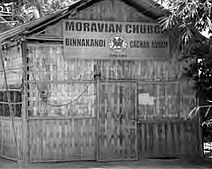
The work of the Moravian Church in the north-eastern corner of India, in the state of Assam, is growing. In Binnakandi there has been a congregation and a Moravian Church school for 30 years, both offshoots of the Moravian Institute in Rajpur, 1,500 km away. They are currently run by Palmei Kabui and Amon Gengmei respectively.
The school has room for 122 girls and boys; there are boarding places for 50 of them. Small congregations have now also been established in the villages of Latingkhal and Haflong.
Both are in the process of building a church, although the latter already has a provisional bamboo church.
The Bible in Ladakhi
The translation of the Bible into Ladakhi, which is spoken in north-western India, is largely complete. The Gospel according to John recently went to print. The project has been supported for years by the Board of World Mission BWM of the Moravian Church in North America, a sister organization of Herrnhuter Missionshilfe. A report by the translator states that it is extremely difficult to translate the Bible into Ladakhi terminology. In Ladakh there are traditional Moravian Churches in Leh, Shey and Khalatse, but there are also attempts to found new congregations in the respective areas. Intercession is expressly requested for the translation project, especially as Christians in the region do not have it easy.
The "Moravian Institute" in Rajpur
The Moravian Institute in Rajpur, an institution of the worldwide Moravin Church at the foot of the Himalayas in the Indian state of Uttarakhand, celebrated its 60th birthday in 2023. On April 2, 1963, Eliyah Thsetan Phunthsog, a pastor of the Moravian Church from Leh (Ladakh), opened a school here for twelve Tibetan refugee children together with his daughter Zhindey Kundan. From small beginnings, the large Moravian Institute has grown into a boarding and day school of the Moravian Church for over 500 boys and girls, which is highly regarded far and wide. Today, it is not only Tibetans who study here, but also other ethnic groups such as Hindis, Nepalese, Gurkhas, Nagas, Ladakspas, Kanjars and Banjaras. The school campus has been repeatedly expanded and modernized. There has also been a church in Rajpur since 2009. Herrnhuter Missionshilfe maintains a sponsorship program for the children of this school.
Project Pictures
sponsorships and scholarships in South Asia
Information on sponsorships and the scholarship program in South Asia can be found under the heading Sponsorships&Scholarships.
